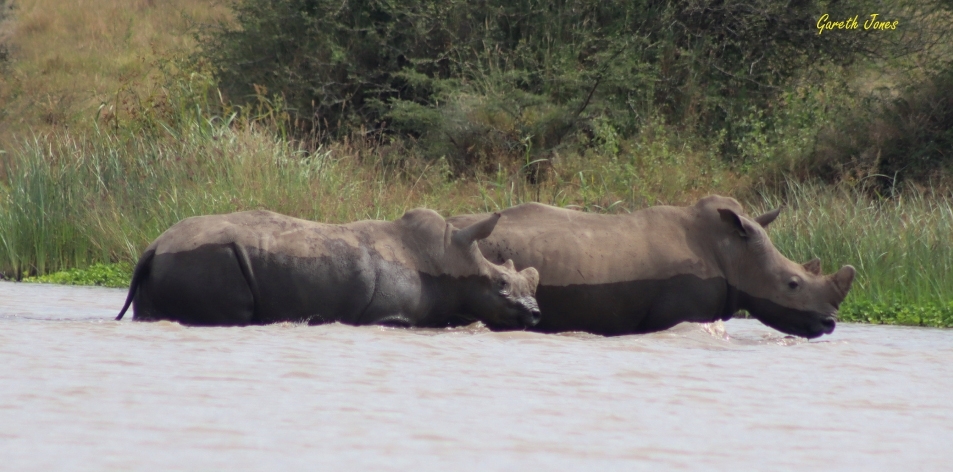
Rhino Crossing – Article by Gareth Jones
RHINO CROSSING IN THE NAIROBI NATIONAL PARK
Every time we drive into the park there is an excitement in knowing that every day is different and that we might witness something unusual. Recently on a relatively cool morning, we drove to one of our favourite dams. Near the far end of the dam, we saw a family group of 5 white rhino approaching the water’s edge. We somehow assumed that they were going to drink, but to our complete surprise, most of them didn’t even drink. When they arrived at the water, they stood calmly still for a few moments. I noticed a crocodile lying in the shallow water very close to the rhinos, however, they were completely confident as they strode into the deep water. No doubt with a body that size and an incredibly tough skin no “overgrown lizard” was going to spoil their moment. as they simply waded into the deep water and crossed over onto the other side of the dam. WOW!!..what a rare sighting, certainly a first for me after more than 4,500 game drives in the Nairobi National Park. It was also interesting that they seemed to be on a mission to go to a location for better grazing grasses on the other side. Perhaps they had literally decided to try and live up to the well known saying that “the grass is always greener on the other side” or is it really? As they emerged from the water, the wet bottom part of their bodies and dry upper part gave a two-tone colour effect, that I called “two-ton two-tone”.
It should be noted that White Rhinos were relatively recently introduced into the park in October 2009, when 10 rhino were translocated from the Nakuru National Park, the current population continues to grow. The White rhino species in Kenya were introduced into Kenya from South Africa more than 45 years ago. White Rhinos are different to Black Rhinos in many ways, firstly they are much heavier, relatively placid compared to the aggressive black rhino, and they have square mouths designed to graze grasses, while the black rhino has a cleft hooked lip designed to eat twigs and leaves. The names Black and White rhino have nothing to do with their colours, they are both dark grey. It started when Dutch settlers remarked on their “wyd” or wide mouths, someone translated that as “white”, so they were named white rhino, then another different species were found, so they just called it the opposite of white, namely black.
In my personal experience, no game drive is ever the same, there is always something uniquely different to see. Next time you visit the park, go with the attitude of expecting the unexpected. You just never know what you might experience with incredible sightings.


